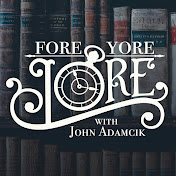
Student Television Network presents, Unscripted hosted by Van Emberger and Nicole Borman. EP.4: How to Make a Short Film (Nov. 17, 2023)

Fore Yore Lore hosted by John Adamick. EP. 14: Film Project With Community Partnership Opportunities (June 23, 2023)